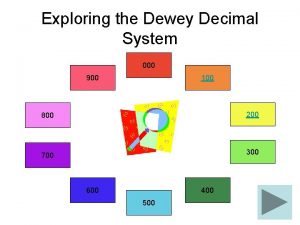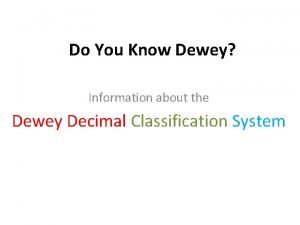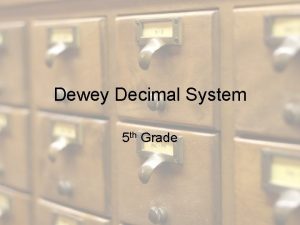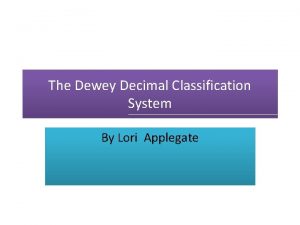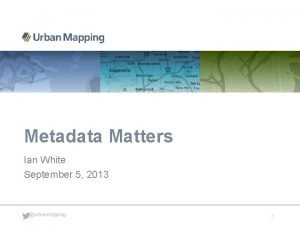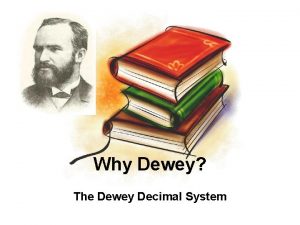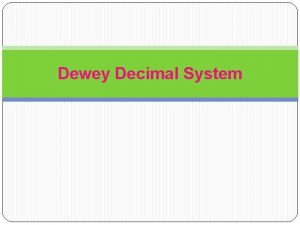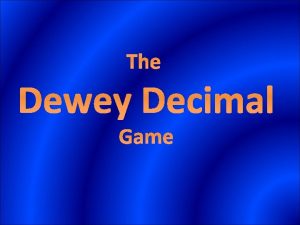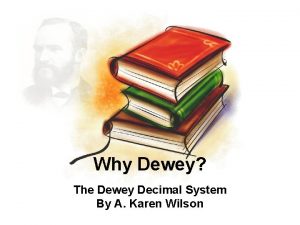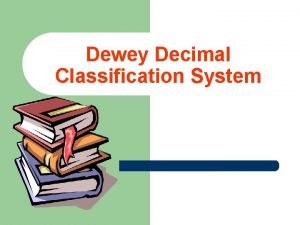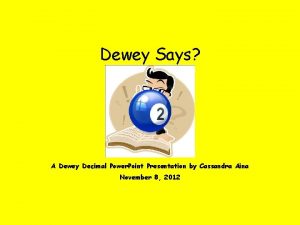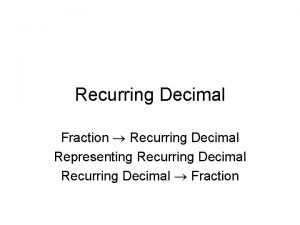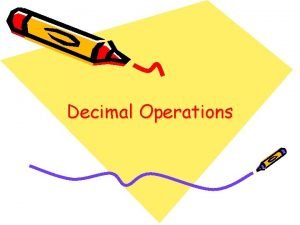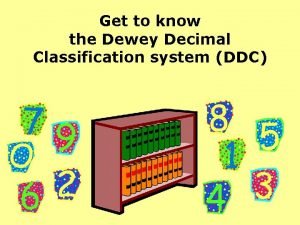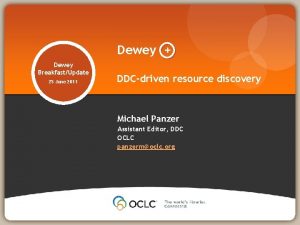Get to know The Dewey Decimal Get to



















- Slides: 19

Get to know : The • Dewey Decimal Get to know the Dewey Decimal Classification system A brief Power. Point slide show to help you understand how the Dewey Decimal Classification system works in your library

Get to know the DDC Have you ever gone to the library and wondered how you’d ever find the books you want?

Did you know that your library has a great way of organizing its books so that you can find them easily?

Get to know the DDC It’s called the Dewey Decimal Classification System—or DDC for short. This system got its name from Melvil Dewey, the man who had this great idea for organizing library collections. He lived from 1851 to 1931 and introduced the DDC in 1876. Melvil Dewey

Get to know the DDC Mr. Dewey’s idea was so good that it has lasted for 130 years so far and it has spread to more than 200, 000 libraries in 135 countries around the world!

Get to know the DDC You may be wondering how you’re supposed to use the DDC. Those numbers with periods in them on the ends of the bookshelves might look confusing to you. But once you know more about the DDC, you’ll find that they make it easy for you to find the books you want. ?

Get to know the DDC It helps solve a big problem: So what does the DDC do? helping you find the right information by giving you a specific number that belongs to the item you want.

Get to know the DDC The DDC helps libraries arrange the items so that library users can find them. It’s a lot like a neatly organized chest of drawers that you might have in your bedroom: • • Socks in the top drawer Underwear in the second drawer Shirts in the third drawer Pants in the bottom drawer

Get to know the DDC Let’s say you’re interested in bicycles. What you want to know about them will decide what DDC numbers you’ll need to find: • • The history of bicycles Taking care of your bicycle Bicycle safety Bicycle racing

Get to know the DDC Each of these topics is about bicycles, but a book about each of these topics will have its very own DDC number. • The history of bicycles (796. 6) • Taking care of your bicycle (629. 27) • Bicycle safety (388. 12) • Bicycle racing (796. 62)

Get to know the DDC Once you have the number for the book you need, you can go find the row of books where the book you want should be. The books on each shelf are arranged in number order, but if you need help, a parent or someone who works at the library can help you.

Get to know the DDC You will probably notice that when you find a specific book, other books shelved around it are usually books on a similar topic. That’s how the DDC is arranged—by topic. And boy does the DDC have lots of topics! Hundreds of them! Thousands of them!

The topics in the DDC are arranged into ten main classes: • 000 Computer science, information & general works • 100 Philosophy & psychology • 200 Religion • 300 Social sciences • 400 Language • 500 Science • 600 Technology • 700 Arts & recreation • 800 Literature • 900 History & geography

Each division is then divided into ten sections, like this: • 790 Recreational & performing art • 791 Public performances • 792 Stage presentations • 793 Indoor games & amusements • 794 Indoor games of skill • 795 Games of chance • 796 Athletic & outdoor sports & games • 797 Aquatic & air sports • 798 Equestrian sports & animal racing • 799 Fishing, hunting & shooting

You’ll see all of these numbers on the LEFT side of the decimal point. But what about the numbers on the RIGHT side of the decimal point? 796. 046

The numbers on the right side are used to divide a specific subject into even more specific parts of a subject. – For a book on making cookies at home, look for 641. 8654 – For a book on Golden Retrievers, look for 636. 7527 – For a book on stained glass, look for 748. 5 It’s like sorting your socks by color, or music CDs by performer or type of music.

Get to know the DDC So how do you know what numbers to look for in the first place? Here a few suggestions: • You can look up your topic on a computer in your library. • You can browse the shelves, using the DDC numbers on the ends of shelves as your guide. • You can ask someone who works at the library to help.

Get to know the DDC Once you get to know the DDC, you’ll have a much better idea about where you’ll find the books and other items you need in your library—and in other libraries that use the DDC.

Get to know the DDC Mr. Dewey had a great idea way back in 1876 that helps library users like you today. His idea, the DDC, is your friend in the library — a friend you can always count on to help you find the information you need. Melvil Dewey
 Get in get on get off get out
Get in get on get off get out Dewey decimal system 700
Dewey decimal system 700 Britannica dewey decimal
Britannica dewey decimal Do you know dewey
Do you know dewey Douay decimal system
Douay decimal system 700s dewey decimal system
700s dewey decimal system Dewey decimal system 000-099
Dewey decimal system 000-099 Dewey decimal 700's
Dewey decimal 700's Dewey decimal 741
Dewey decimal 741 Dewey decimal
Dewey decimal Dewey decimal 500
Dewey decimal 500 Dewey decimal system
Dewey decimal system Dewey decimal 700's
Dewey decimal 700's Dewey decimal system
Dewey decimal system 910 dewey decimal
910 dewey decimal Library congress system
Library congress system Dewey decimal system
Dewey decimal system Dewey decimal system clipart
Dewey decimal system clipart Printable dewey decimal system
Printable dewey decimal system Dewey decimal gardening
Dewey decimal gardening

